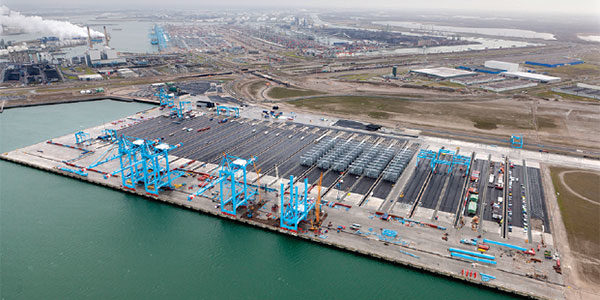Automated container terminal produces zero emissions

Because it will be handling the world's largest containerships, APM Terminals' brand-new Maasvlakte II container terminal in Rotterdam, the Netherlands, was designed for efficiency. Every task that could possibly be done without human intervention has been automated. The terminal includes eight remote-controlled ship-to-shore cranes—the first in the world to be operated without anyone in the cab. The cranes place containers on "lift automatic guided vehicles," which travel from the dock to the container yard using an onboard navigation system that follows a transponder grid. (Similar technology is in place at Hamburg's Altenwerder Container Terminal.) Once the containers arrive at their destination, the AGVs deposit them into storage racks. Later, automated rail-mounted gantry cranes move the containers from the racks to the rail terminal, to a waiting truck, or to another area of the yard as needed.
The terminal, which opened to landside intermodal business in November and will be fully open for maritime business in February, has another claim to fame: APM says Maasvlakte II is the only container terminal in the world that produces zero emissions on site. Because its entire fleet of ship-to-shore, on-dock, and yard cranes; AGVs; and personnel transport vehicles are battery-powered, the company says, the terminal will produce no carbon dioxide, nitrogen oxide, or particulate emissions.
As if the operation weren't "green" enough, as of Jan. 1, 100 percent of Maasvlakte II's electricity needs are being supplied by wind power. Under a two-year contract, Amsterdam-based NV Nuon Energy will provide electricity generated by offshore and onshore wind farms in Europe.
Related Articles
Copyright ©2024. All Rights ReservedDesign, CMS, Hosting & Web Development :: ePublishing